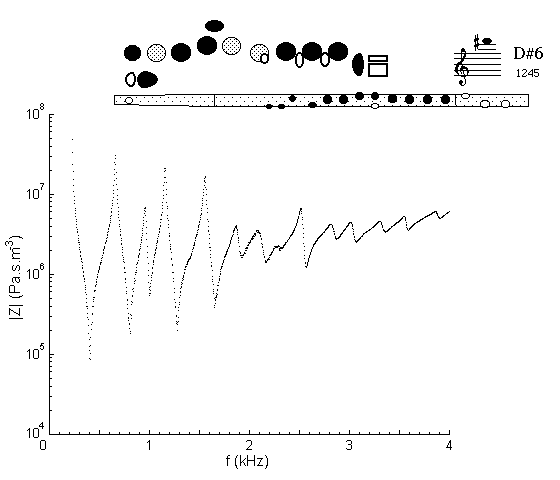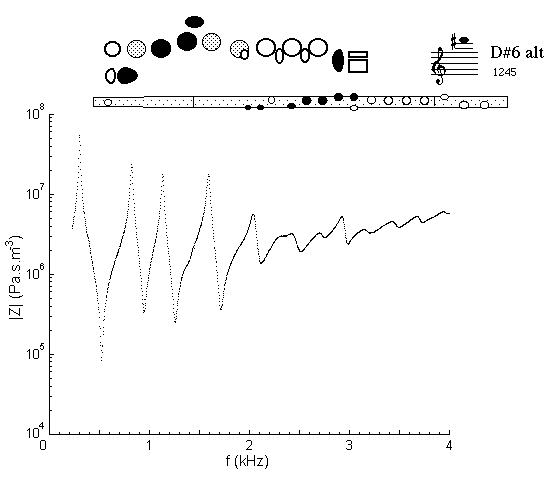| Acoustics of baroque, classical and modern flutes |
modern flute
|
D#6 |

|
Fingering Acoustic schematic Non-specialist introduction
to acoustic impedance |
This fingering is comparable to that for D#4 except for the use of the G# key as a register hole. This creates a pressure node (or flow antinode) about three quarters of the way along the pipe, and thus allows D#6 but not D#4, D#5, or A#5. Comparing this with the D#4 impedance spectrum, we see that the fourth minimum is little changed. The third is shallower and unplayable. The first minimum plays ~G#4 and the second ~G5 but, because it is a cross fingering for these notes, their timbres are darker. Combinations of these three notes may be played simultaneously as multiphonics.
Alternative Fingering I |
modern flute C foot |

|
Fingering Acoustic schematic Non-specialist introduction
to acoustic impedance |
This fingering, used in trills, is comparable to that for G#4 except for the open register hole. This creates a pressure node (or flow antinode) about two thirds of the way along the pipe, and thus allows D#6 but not G#4 or G#5. Comparing this with the D#4 impedance spectrum, we see that the third minimum is little changed. The second is shallower and unplayable. The first minimum plays C5 but, because it is a cross fingering for this note, its timbre is darker. Both C5 & D#6 may be played simultaneously as a multiphonic.
Alternative Fingering II |
modern flute C foot |
 |
Fingering Acoustic schematic Non-specialist introduction
to acoustic impedance |
Impedance spectrum of a modern flute with a C foot measured at the embouchure hole using alternative fingering for D#6.
This fingering also plays the multiphonic C5, C6 & D#6.
| Acoustic measurements are available for these flutes - modern B, modern C, classical C, classical D, classical flared, baroque Sound clips are available for modern B, classical flared and baroque |
To compare flutes, it is easiest to open a separate browser window for each instrument. |